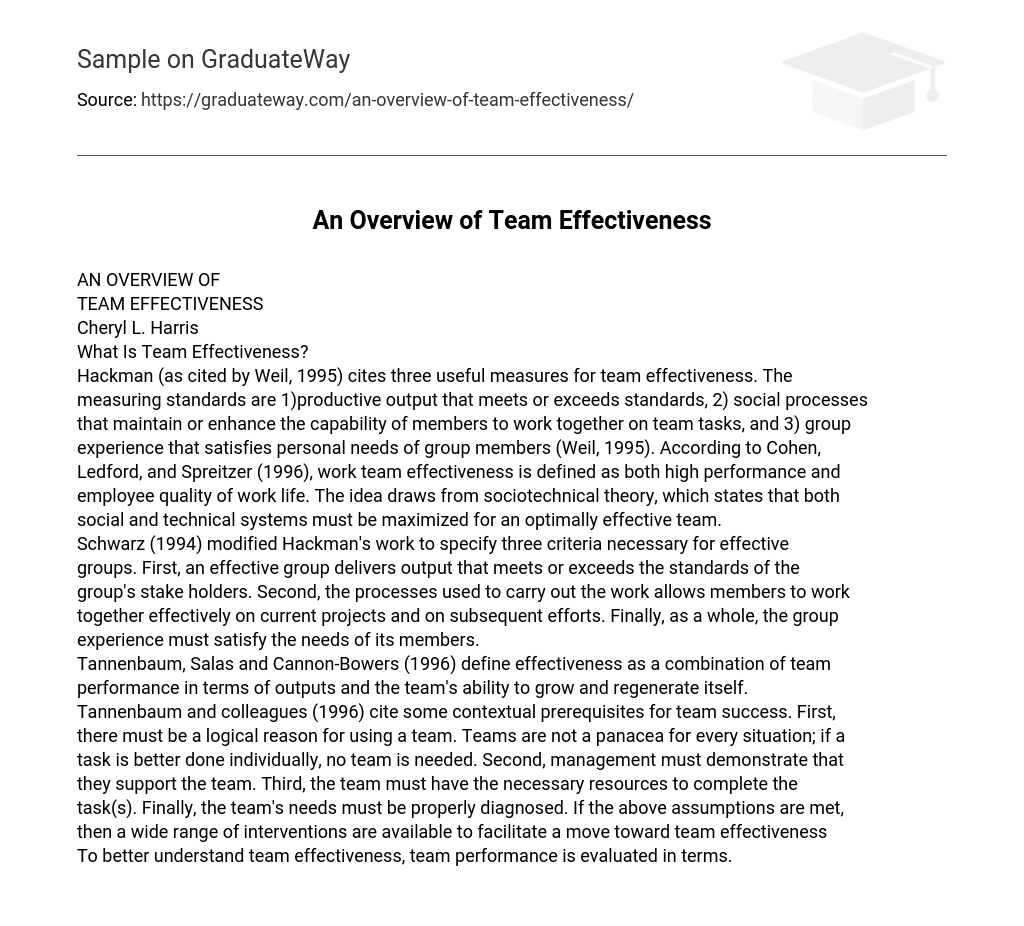The measuring standards are
- productive output that meets or exceeds standards,
- social processes that maintain or enhance the capability of members to work together on team tasks,
- group experience that satisfies personal needs of group members (Weil, 1995).
According to Cohen, Ledford, and Spreitzer (1996), work team effectiveness is defined as both high performance and employee quality of work life. The idea draws from sociotechnical theory, which states that both social and technical systems must be maximized for an optimally effective team. Schwarz (1994) modified Hackman’s work to specify three criteria necessary for effective
groups.
First, an effective group delivers output that meets or exceeds the standards of the group’s stake holders. Second, the processes used to carry out the work allows members to work together effectively on current projects and on subsequent efforts. Finally, as a whole, the group
experience must satisfy the needs of its members.
Tannenbaum, Salas and Cannon-Bowers (1996) define effectiveness as a combination of team performance in terms of outputs and the team’s ability to grow and regenerate itself. Tannenbaum and colleagues (1996) cite some contextual prerequisites for team success.
First, there must be a logical reason for using a team. Teams are not a panacea for every situation; if a task is better done individually, no team is needed. Second, management must demonstrate that they support the team. Third, the team must have the necessary resources to complete the task(s). Finally, the team’s needs must be properly diagnosed.
If the above assumptions are met, then a wide range of interventions are available to facilitate a move toward team effectiveness
To better understand team effectiveness, team performance is evaluated in terms.





